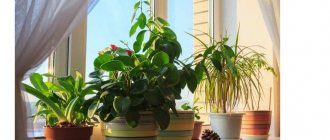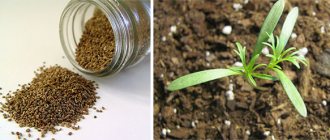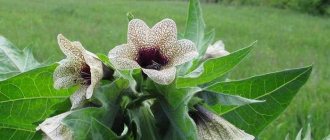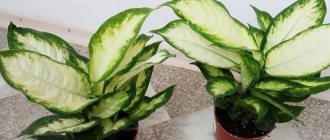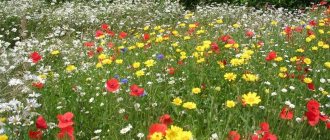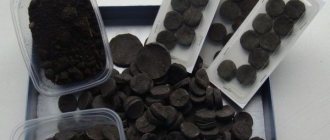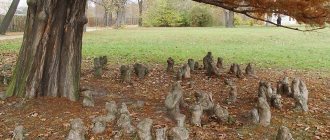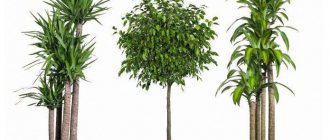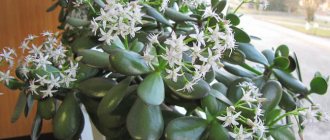Why do some house plants cause allergic reactions?
Small particles from the surface of plant leaves enter the air. A person inhales them and causes a reaction in the body. This manifestation is often provoked by allergenic house flowers, which at first glance look completely harmless.
Moreover, it does not occur in all family members, but only in those who have an individual predisposition. People who are tolerant to allergens will not notice such evaporation. And those who are more susceptible to odors, and especially to allergens, will react.
Most often the problem is caused by pollen or plant sap . In some cases, we forget about other factors that are fraught with danger.
- House flowers are dampness, mold and fungus, inhabitants of the soil.
- The leaves of the flower collect dust - it can also provoke a reaction. Dust often becomes a haven for house mites.
Allergy symptoms on room plants
Manifestations of an allergic reaction are typical and include itching, continuous sneezing, coughing, runny nose and watery eyes. Often we do not attach importance to this and cannot even imagine that this is due specifically to the plants in the house, and not to food or other allergens. In some cases, the allergic reaction can be very strong, even leading to Quincke's edema. In addition, there are often cases when an allergy to flowers becomes chronic and develops into respiratory allergies and asthma.
There are three types of respiratory allergies:
- Allergic rhinosinusitis , which manifests itself in the form of itching, sneezing, burning and nasal discharge. In severe cases, swelling of the mucous membranes of the nose and eyes is possible. A person in this state experiences drowsiness, headache and general malaise. Allergic rhinosinusitis, in turn, is divided into: seasonal (hay fever), hay fever (occurs due to pollen particles entering the respiratory tract), and infectious-allergic rhinosinusitis (a combination of the first two types).
- Allergic laryngitis - this type of allergosis is characterized by increased manifestations of the disease at night: difficulty breathing, severe cough, pallor, even blueness of the nose and lips.
- Allergic tracheobronchitis is accompanied by a dry cough, mainly at night for a long time.
Which plants are dangerous to humans: names, descriptions and photos
Most indoor plants are safe for humans and do not cause allergies . But among them there are those that are better not to breed at home.
Primrose
Belongs to the primrose family and is very popular among gardeners. Therefore, you can find this flower in almost every garden plot. It is one of the first to break through the still frozen soil and delights gardeners with lush flowering for almost a whole month. Bright red, purple, yellow - the color of the buds is varied.
And it is completely safe as a garden plant. But it changes its properties in the opposite direction when it is brought into the apartment. People prone to allergies should not grow it at home. After working with a potted plant, severe irritation and rash may appear on your hands.
If you are a fan of primrose, plant it in your garden. This way you will be completely safe!
Geranium
This flower is very popular in our country. It and its closest relative, pelargonium, are valued for their abundant, long, lush flowering. Many even attribute medicinal properties to geranium - it has a beneficial effect on the functioning of the cardiovascular system.
However, it should be remembered that the foliage of the flower is rich in essential oils, so proximity to geranium can cause illness in the inhabitants of the apartment. The body's reaction can also be provoked by skin contact with the foliage of the flower.
Dieffenbachia
We do not recommend taking him as a neighbor and sharing the same room with him. A very poisonous flower.
Despite the fact that it is very unpretentious, it has beautiful large leaves and can fit harmoniously into the interior of the room, we advise you to be careful. Contact with plant sap can cause severe skin irritation and even burns .
Some pets love to eat indoor plants. Remember that the juice of the plant is very poisonous and under no circumstances should it enter the stomach, even of animals. May cause irreversible reaction.
Poinsettia
Another name for this beautiful indoor plant is Christmas star. And currently it is very popular, especially during the New Year and Christmas holidays. It is great as a gift.
But it definitely won’t bring joy to people prone to allergies. But rather the opposite. The milky juice of the flower, if it comes into contact with the skin, can cause severe irritation and cause a burn.
Spathiphyllum
A beautiful plant, people like to buy it for houses and apartments, as it cleans the air well.
But in some cases, the plant causes an allergy - it is caused by the pollen of the plant. Frequent symptoms of allergies are swelling of the lips and tongue .
Diathesis in children
You should not self-medicate!
Diathesis or excessive tendency of the child’s body to manifest and develop allergic symptoms or conditions of inflammatory processes. Diathesis often occurs in the first years of a child’s life. This disease refers to a specific form of allergy manifestations in childhood. According to statistics, many children in their first and second years of life suffer from diathesis.
The organisms of infants are more susceptible to diathesis. When this form of allergy occurs, so-called diaper rash appears on the skin. These are a kind of areas of the skin that appear on the head in its scalp. In addition, with diathesis, the child notices the appearance of a milky scab that forms in the area of the bright red cheeks.
In most cases, the cause of diathesis in infants is the food they eat. This could be the wrong choice of artificial food for the baby or the wrong nutrition of the expectant mother carrying the baby. Manifestations of diathesis serve as a harbinger of the appearance in the future of infants of such diseases as: psoriasis, seborrheic dermatitis, eczema, neurodermatitis. Therefore, the expectant mother should carefully monitor her own diet, exclude quick snacks, not eat foods containing large amounts of dyes and carcinogens, not use genetically modified vegetables and fruits in cooking, and also give up alcohol.
The causes of diathesis in children are frequent manifestations of toxicosis during pregnancy, the use of various types of pharmacotherapy during the baby’s intrauterine development, as well as excessive consumption of food allergens by the expectant mother (citrus fruits, nuts, eggs, honey).
How to avoid bringing an allergen home?
If you like a flower in a specialty store, ask the seller to tell you about it. Garden centers that value their name have qualified staff and their advice can be trusted. In addition, you can Google the name of the plant and the World Wide Web will give you the full breakdown - all the pros and cons.
It is necessary to pay attention first of all to your own well-being and the condition of your household.
If unpleasant symptoms appear after purchasing a plant, it is advisable to exclude contact with the irritant and promptly visit a medical facility.
Causes
The negative symptoms of the disease are a consequence of the response of the immune system, which reacts sharply to essentially safe substances from the environment.
Why is this happening? There is no clear answer to this.
Scientists have put forward the following version:
Allergies are caused by a genetic predisposition in combination with the lifestyle features of modern humans (active use of antibacterial drugs from the first months of a newborn’s life, minimal contact with wildlife, excessive measures to disinfect the surrounding space, etc.)
What should be done in case of such a reaction?
There are several simple rules for allergies to house plants:
- If you or your household have chronic diseases of the lungs or upper respiratory tract, avoid purchasing a questionable plant. No matter how beautiful it is, it is not worth the health of you and your family.
- Ventilate the room regularly and do wet cleaning. Wash the flower more often, give it a shower or wipe the leaves, be sure to use protective equipment - gloves and a mask).
- Medicines can help relieve allergy symptoms. People suffering from allergies usually know about their illness and always have the necessary medications with them. At the first sign of an allergy, take the pills and observe. Relief should occur within 20-30 minutes.
- And of course, it is necessary to leave the room where the source of the allergy is located, or remove the houseplant that caused such a reaction.
- If all else fails, you should immediately contact a medical facility for help.
What causes allergies?
Diathesis in infants
An Austrian pediatrician in the twentieth century first noticed the hypersensitivity of his patients to the effects of the same substance on their body. These substances that cause allergy symptoms are called allergens. When they penetrate into the child’s body, a protective reaction begins, caused by the action of the immune system. The child’s immune system tries to suppress the allergen that has entered the body. After the initial contact of a child’s immune system with an allergen, his system tries to remember the type of foreign substance, which, if it enters the body again, triggers the launch of sensitive immune cells.
At this moment, an inflammatory response begins to develop, in the form of increased blood flow, the appearance of tissue swelling and an increase in temperature. These symptoms, when intensified, can even threaten the life of a child’s body. In the modern world, the following reasons are identified that can cause the development of allergies in children:
The myth of poplar fluff: what actually causes the spring flare-up?
Many patients who turn to a good paid therapist for help, when collecting an anamnesis, name poplar fluff as the cause of their condition. In fact, in itself it very rarely causes hay fever, but it contributes to the transfer of pollen from a number of allergen plants. The list of them varies for different Russian regions, differing in the dates of the arrival of climatic spring and summer.
- From April to May, allergies can be caused by pollen from flowering trees and shrubs - birch and alder, willow and poplar, beech and maple, oak and chestnut, hazel, elm and ash.
- In the late spring and summer months, cereal plants bloom successively - wheat and rye, timothy and fescue, ryegrass and bluegrass, wheatgrass and foxtail.
- In autumn, hay fever is caused by pollen from wormwood and quinoa, nettle and hemp, and in the southern regions the strongest allergen is ragweed finger.
Safe plants
It is important to know not only which house flowers you may be allergic to, but also which ones do not create problems and, to a certain extent, are even useful. These are Begonia, Impatiens, Romeliaceae, Heather, Commelineaceae. In order for plants to develop normally, it is necessary to provide a high level of air humidity. As a result, its saturation with allergens is reduced.
To eliminate allergies, you need to choose the right plants that you plan to keep at home. However, it is also necessary to observe the growing conditions - maintain the required level of humidity, regularly ventilate the home.
"Allergies are harmless." “It is impossible to recover from it, which means treatment is useless”
These are two more myths that lead to the fact that many patients for years sneeze, breathe heavily or suffer from inflammation of the mucous membranes of the eight paranasal sinuses. In addition to rhinitis and sinusitis, inflammation of the middle ear (otitis media), the formation of polyps and cysts in the paranasal sinuses, and pollen bronchial asthma can occur.
Many potential patients of an allergist independently diagnose hay fever and take antiallergic, so-called antihistamines, drugs and sprays. Unfortunately, with their help you can only remove the symptoms, but not cure allergies.
The only method for treating allergies today is called allergen-specific immunotherapy (ASID). It allows you to get rid of the cause of the disease and achieve stable remission, when at the end of the treatment course the symptoms of hay fever will not recur. During the course of the program, slowly but systematically, instead of an allergic immune response, a normal one is formed.
